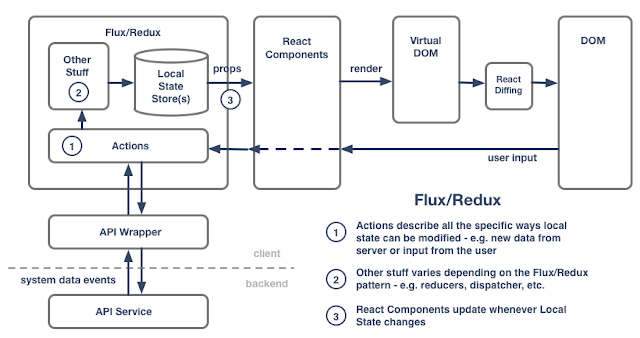王澤鑑《民法總則》前頭這篇文章非常淺白。
如果還想看更多:
- Walter Benjamin, Critique of Violence.
- Giorgio Agamben, Homo Sacer.
後來我們會發現,講完「天日昭昭」兩遍照樣莫須有,如果把眼光移到對立面,宋高宗暴力才是真理。
法律的鬥爭
著作:魯道夫.馮.耶林
翻譯:薩孟武
一
法律的目的是和平,而達到和平的手段則為鬥爭。法律受到不法的侵害之時——這在世界上可能永遠存在——鬥爭是無法避免的。法律的生命是鬥爭,即民族的鬥爭,國家的鬥爭,階級的鬥爭,個人的鬥爭。
世界上一切法律都是經過鬥爭而後得到的。法律的重要原則無一不是由反對者的手中奪來。法律的任務在於保護權利,不問民族的權利或個人的權利,凡想保全權利,事前須有準備。法律不是紙上的條文,而是含有生命的力量。正義之神,一手執衡器以權正義,一手執寶劍,以實現正義,寶劍而無衡器,不過暴力。衡器而無寶劍,只是有名無實的正義。二者相依相輔,運用寶劍的威力與運用衡器的技巧能夠協調,而後法律才完全見諸實行。
世上有不少的人,一生均在和平的法律秩序之中,過其悠遊自在的生活。我們若對他們說:「法律是鬥爭」,他們將莫明其妙。因為他們只知道法律是保障和平與秩序。這也難怪他們,猶如豪門子弟繼承祖宗的遺產,不知稼穡艱難,從而不肯承認財產是勞動的成果。我們以為,法律也好,財產也好,都包含兩個要素,人們因其環境之不同,或只看到享樂與和平之一面,或只看到勞苦與鬥爭之一面。
財產及法律猶如雙面神的耶奴斯的頭顱(Janus-head)一樣,對甲示其一面,對乙又示其另一面,於是各人所得的印象就完全不同。此種雙面的形象,不但個人,就是整個時代也是一樣。某一時代的生活是戰爭,另一時代的生活又是和平。各民族因其所處時代不同,常常發生一種錯覺。此種錯覺實和個人的錯覺相同,當和平繼續之時,人們均深信永久和平能夠實現,然而砲聲一響,美夢醒了。以前不勞而獲的和平時代已成陳跡,接著而來的則為面目全非的混亂時代。要衝破這個混亂時代,非經過艱苦的戰爭,絕不能恢復和平。沒有戰鬥的和平及沒有勤勞的收益,只存在於天堂。其在人間,則應是努力辛苦奮鬥的結果。
德文Recht有客觀的(objective)及主觀的(subjective)兩種意義。客觀的意義是指法律,即指國家所維護的法律原則,也就是社會生活的法律秩序。主觀的意義是指權利,即將抽象的規則改為具體的權利。法律也好,權利也好,常常遇到障礙;要克服障礙,勢非採取鬥爭的方法不可。
我們知道法律需要國家維持。任何時代必定有人想用不法的手段侵害法律。此際國家若袖手旁觀,不予鬥爭,則法律的尊嚴掃地,人民將輕蔑法律,視為一紙具文。然而我們須知法律又不是永久不變的,一方有擁護的人,同時又有反對的人,兩相對立,必引起一場鬥爭。在鬥爭中,勝負之數不是決定於理由的多少,而是決定於力量的大小。不過人世的事常不能循著直線進行,多採取中庸之道。擁護現行法律是一個力量,反對現行法律也是一個力量,兩個力量成為平行四邊形的兩邊垂直線,兩力互相牽制,終則新法律常趨向對角線的方向發展。一種制度老早就應廢止,而卒不能廢止者,並不是由於歷史的惰性,而是由於擁護者的抵抗力。
是故在現行法律之下,要採用新的法律,必有鬥爭。這個鬥爭或可繼續數百年之久。兩派對立,都把自己的法律——權利視為神聖不可侵犯。其結果如何,只有聽歷史裁判。在過去法制史之上,如奴隸農奴的廢除,土地私有的確立,營業的自由,言論的自由,信教的自由等等,都是人民經過數世紀的鬥爭,才能得到的。法律所經過的路程不是香花鋪路,而是腥血塗地,吾人讀歐洲歷史,即可知之。
總而言之,法律不是人民從容揖讓,坐待蒼天降落的。人民要取得法律,必須努力,必須鬥爭,必須流血。人民與法律的關係猶如母子一樣,母之生子須冒生命的危險,母於之間就發生了親愛感情。凡法律不由人民努力而獲得者,人民對之常無愛惜之情。母親失掉嬰兒,必傷心而痛哭;同樣,人民流血得到的法律亦必愛護備至,不易消滅。
二
現在試來說明法律鬥爭。這個鬥爭是由一方要侵害法益,他方又欲保護法益而引起的。不問個人的權利或國家的權利,其對侵害,無不盡力防衛。蓋權利由權利人觀之,固然是他的利益,而由侵害人觀之,亦必以侵害權利為他的利益,所以鬥爭很難避免。上自國權,下至私權,莫不皆然。國際上有戰爭,國內有暴動與革命。在私權方面,中世有私刑及決鬥,今日除民事訴訟之外,尚有自助行為。此數者形式不同,目的亦異,而其為鬥爭則一。於是就發生一個問題:我們應該為權利而堅決反抗敵人乎,抑為避免鬥爭,不惜犧牲權利乎?前者是為法律而犧牲和平,後者則為和平而犧牲法律。固然任誰都不會因為一元銀幣落在水中,而願出兩元銀幣雇人撈取。這純粹出於計算。至於訴訟卻未必如此,當事人不會計較訴訟費用多少,也不想將訴訟費用歸諸對方負擔。勝訴的人雖知用費不貲,得不償失,而尚不肯中輕訴訟,此中理由固不能以常理測之。
個人的糾紛姑且不談,今試討論兩國的紛爭。甲國侵略乙國,雖然不過荒地數里,而乙國往往不惜對之宣戰。為數里之荒地,而競犧牲數萬人之生命,數億元之鉅款,有時國家命運且因之發生危險。此種鬥爭有什麼意義?蓋乙國國民若沉默不作抗爭,則今天甲國可奪取數里荒地,明天將得寸進尺,奪取其他土地,弄到結果,乙國將失掉一切領土,而國家亦滅亡了。由此可知國家因數里荒地所以不惜流血,乃是為生存而作戰,為名譽而作戰,犧牲如何,結果如何,他們是不考慮的。
國民須保護其領土,則農民土地若為豪強侵佔數丈,自可起來反抗,而提起訴訟。被害人提起訴訟,往往不是因為實際上的利益,而是基於權利感情(feeling of right),對於不法行為,精神上感覺痛苦。即不是單單要討還標的物,而是要主張自己應有的權利。他的心聲告訴他說:你不要退縮,這不是關係毫無價值的物,而是關係你的人格,你的自尊,你的權利感情。簡單言之,訴訟對你,不是單單利益問題,而是名譽問題,即人格問題。
世上必有不少的人反對吾言。這個反對意見一旦流行,則法律本身就歸毀滅。法律能夠存在,乃依靠人們對於不法,肯作勇敢的反抗,若因畏懼而至逃避,這是世上最卑鄙的行為。我敢堅決主張,吾人遇到權利受到損害,應投身於鬥爭之個出來反抗。此種反抗乃是每個人的義務。
三
權利鬥爭是權利人受到損害,對於自己應盡的義務。生存的保全是一切動物的最高原則。但是其他動物只依本能而保全肉體的生命,人類除肉體的生命之外,尚有精神上的生命。而此精神上的生命由法律觀之,則為權利。沒有法律,人類將與禽獸無別。一種法律都是集合許多片段而成,每個片段無不包括肉體上及精神上的生存要件。拋棄法律等於拋棄權利,這在法律上是不允許的,而且亦不可能。如其可能,必定受到別人侵害;抵抗侵害乃是權利人的義務。吾人的生存不是單由法律之抽象的保護,而是由於具體的堅決主張權利。堅決主張自己的權利,不是由於利益.而是出於權利感情的作用。
那輩竊盜因他自己不是所有權人,故乃否認所有權的存在,更否認所有權為人格的要件。是則竊盜的行為不但侵害別人的財物,且又侵害別人的人格,受害人應為所有權而防衛自己的人格。因此竊盜的行為可以發生兩種結果:一是侵害別人的權益;二是侵害別人的人格。至於上述豪強侵佔農民的田地,情形更見嚴重。倘若該受害農民不敢抗爭,必為同輩所輕視。同輩認為其人可欺,雖不敢明日張膽,亦將偷偷摸摸,蠶食該農民的土地。所有權觀念愈發達,受害人愈難忍受侵害,從而反抗的意志亦愈益強烈。故凡提起訴訟而能得到勝訴,應對加害人要求雙重賠償,一是討還標的物;二是賠償權利感情的損傷。
各種國家對於犯罪之會加害國家的生存者,多處以嚴刑。在神權國,凡慢瀆神祗的處嚴刑,而擅自改變田界的,只視為普通的犯罪(例如摩西法)。農業國則反是,擅自改變田界的處嚴刑,慢瀆神祗的處輕刑(古羅馬法)。商業國以偽造貨幣,陸軍國以妨害兵役,君主國以圖謀不軌,共和國以運動復辟,為最大的罪狀。要之,個人也好,國家也好,權利感情乃於生存要件受到損害之時,最為強烈。
權利與人格結為一體之時,不問是那一種權利,均不能計算價值之多少。此種價值不是物質上的價值(material value),而是觀念上的價值(ideal value)。對於觀念上的價值,不論貧與富,不論野蠻人與文明人,評價都是一樣。至其發生的原因,不是由於知識的高低,而是由於苦痛感情的大小。也許野蠻人比之文明人,權利感情更見強烈。文明人往往無意之中,計算得失孰大孰小。野蠻人不憑理智,只依感情,故能勇往猛進,堅決反抗權利之受侵害。但是文明人若能認識權利受到侵害,不但對他自己,而且對整個社會,都可以發生影響,亦會拔劍而起,挺身而鬥,不計利害,不計得失。吾於歐洲許多民族之中,只知英國人民有此權利感情。英國人民旅行歐洲大陸,若受旅館主人或馬車馭者的欺騙,縱令急於出發,亦願延期啟行,向對方交涉,雖犧牲十倍的金錢,亦所不惜。這也許可以引人嗤笑,其實嗤笑乃是不知英國人民的性格,所以與其嗤笑英人,不如認識英人。
四
為法律而鬥爭,是權利人的義務,已如上所言矣。茲再進一步,說明個人擁護自己的法律——即法律上的權利——又是對於社會的義務。
法律與權利有何關係?我們深信法律乃是權利的前提,只有法律之抽象的原則存在,而後權利才會存在。權利由於法律,而後才有生命,才有氣力,同時又將生命與氣力歸還法律。法律的本質在於實行,法律不適於實行或失去實行的效力,則法律已經沒有資格稱為法律了;縱令予以撤廢,亦不會發生任何影響。這個原則可適用於一切國法,不問其為公法,其為刑法,其為私法。公法及刑法的實行,是看官署及官吏是否負起責任,私法的實行則看私人是否擁護自己的權利。私人放棄自己的權利,也許由於愚昧,不知權利之存在;也許由於懶惰或由於畏懼,不欲多事,其結果,法律常隨之喪失銳氣而等於具文。由此可知私法的權威乃懸於權利的行使,一方個人的生命由法律得到保障,他方個人又將生命給與法律,使法律有了生氣。法律與權利的關係猶如血液的迴圈,出自心臟,歸於心臟。
個人堅決主張自己應有的權利,這是法律能夠發生效力的條件。少數人若有勇氣督促法律的實行,藉以保護自己的權利,雖然受到迫害,也無異於信徒為宗教而殉難。自己的權利受到侵害,而乃坐聽加喜人的橫行,不敢起來反抗,則法律將為之毀滅。故凡勸告被害人忍受侵害,無異於勸告被害人破壞法律。不法行為遇到權利人堅決反抗,往往會因之中止。是則法律的毀滅,責任不在於侵害法律的人,而在於被害人缺乏勇氣。我敢大膽主張:「勿為不法」 (Do no injustice)固然可嘉,「勿寬容不法」(Suffer no injustice)尤為可貴。蓋不法行為不問是出之於個人,或是出之於官署,被害人若能不撓不屈,與其抗爭,則加害人有所顧忌,必不敢輕舉妄動。由此可知我的權利受到侵犯,受到否認,就是人人權利受到侵犯,受到否認。反之,我能防護權利,主張權利,回復權利,就是人人權利均受防護,均有主張,均能回復。故凡為一己的權利而奮鬥,乃有極崇高的意義。
在這個觀念之下,權利鬥爭同時就是法律鬥爭,當事人提起訴訟之時,成為問題的不限於權利主體的利益,即整個法律亦會因之發生問題。莎士比亞在其所著(威尼斯的商人) (Merchant of Venice)中,描寫猶太商人舍洛克(Shylock)貸款給安多紐(Anto-nio)的故事,中有舍洛克所說的一段話:
我所要求一磅的肉,
是我買來的,這屬於我,我必須得到;
你們拒絕不予,就是唾棄你們的法律;
這樣,威尼斯的法律又有什麼威力。
……我需要法律,
……我這裏有我的證件。
「我要法律」一語,可以表示權利與法律的關係。又有人人應為維護法律而作鬥爭的意義。有了這一句話,事件便由舍洛克之要求權利,一變而為威尼斯的法律問題了。當他發出這個喊聲之時,他已經不是要求一磅肉的猶太人而是凜然不可侵犯的威尼斯法律的化身,他的權利與威尼斯的法律成為一體。他的權利消滅之時,威尼斯的法律也歸消滅。不幸得很,法官竟用詭計,拒絕舍洛克履行契約。契約內容苟有反於善良風俗,自得謂其無效。法官不根據這個理由,既承認契約為有效,而又附以割肉而不出血的條件。這猶如法官承認地役權人得行使權利,又不許地役權人留足印子地上。這種判決,舍洛克何能心服。當他悄然離開法庭之時,威尼斯的法律也俏然毀滅了。
說到這裏,我又想起另一作家克萊斯特(Henrich von Kleist) 所寫的小說《米刻爾.科爾哈斯》(Michael Kohlass)了。舍洛克悄然走出,失去反抗之力而服從法院的判決。反之,科爾哈斯則不然了。他應得的權利受到侵害,法官曲解法律,不予保護,領主又左袒法官,不作正義的主張。他悲憤極了,說道:「為人而受蹂躪,不如為狗」,「禁止法律保護吾身,便是驅逐吾身於蠻人之中。他們是把棍子給我,叫我自己保護自己」。於是憤然而起,由正義的神那裏,奪得寶劍,揮之舞之,全國為之震駭,腐化的制度為之動搖,君主的地位為之戰慄。暴動的號角已經鳴了。權利感情受到侵害,無異於對人類全體宣戰。但是驅使科爾哈斯作此行動,並不是單單報仇而已,而是基於正義的觀念。即余當為自己目前所受的侮辱,恢復名譽;並為同胞將來所受的侵害,要求保護,這是余的義務。結果,他便對於從前宣告他為有罪的人——君主、領主及法官,科以2倍、3倍以上的私刑。世上不法之事莫過於執行法律的人自己破壞法律。法律的看守人變為法律的殺人犯,醫生毒死病人,監護人絞殺被監護人,這是天下最悖理的事。在古代羅馬,法官受賄,便處死刑。法官審判,不肯根據,而惟視金錢多少,勢力大小,法律消滅了,人民就由政治社會回歸到自然世界,各人均用自己的腕力以保護自己的權利,這是勢之必然。
人類的權利感情不能得到滿足,往往採取非常手段。蓋國家權力乃所以保護人民的權利感情,而今人民的權利感情反為國家權力所侵害,則人民放棄法律途徑,用自助行為以求權利感情的滿足,不能不說是出於萬不得已。然此又不是毫無結果。教徒的殉難可使羅馬皇帝承認基督教,歐洲各國的民主憲政何一不是由流血得來。科爾哈斯揮動寶劍實是「法治」發生的基礎。
五
國民只是個人的總和,個人之感覺如何,思想如何,行動如何,常表現為國民的感覺思想和行動。個人關於私權的主張,冷淡而又卑怯,受了惡法律和惡制度的壓迫,只有忍氣吞聲,不敢反抗,終必成為習慣,而喪失權利感情。一旦遇到政府破壞憲法或外國侵略領土,而希望他們奮然而起,為憲政而鬥爭,為祖國而鬥爭,爭所難能。凡沉於安樂,怯於抗鬥,不能勇敢保護自己權利的人,哪肯為國家的名譽,為民族的利益.犧牲自己的生命。至於名譽或人格也會因而受到損害,此輩是不瞭解的。此輩關於權利,只知其為物質上的利益,我們何能希望他們另用別的尺度以考慮國民的權利及名譽。所以國法上能夠爭取民權,國際法上能夠爭取主權的人,常是私權上勇敢善戰之士。前曾述過,英國人願為區區一便士之微而願付出十倍以上的金錢,與加害人從事鬥爭。有這鬥爭精神,故在國內能夠爭取民主政治,於國外能夠爭取國家聲望。
對於國民施行政治教育的是私法,絕不是公法。國民在必要時,若能知道如何保護政治的權利,如何於各國之間,防衛國家的獨立.必須該國人民在私人生活方面,能夠知道如何主張他們自己的權利。自己權利受到侵害,不問來自何方,是來自個人乎,來自政治乎,來自外國乎,若對之毫無感覺,必是該國人民沒有權利情感。是故反抗侵害,不是因為侵害屬於那一種類,而是懸於權利感情之有無。
依上所述,我們可以得到簡單的結論,即對國外要發揚國家的聲望,對國內要建立強國的基礎,莫貴於保護國民的權利感情;且應施以教育,使國民的權利感情能夠生長滋蔓。
專制國家的門戶常開放給敵人進來。蓋專制政府無不蔑視私權,賦稅任意增加,沒有人反對;徭役任意延長,沒有人抗議。人民養成了盲從的習慣,一旦遇到外敵來侵,人民必萎靡不振,移其過去盲從專制政府者以盲從敵人政府。到了這個時候,政治家方才覺悟,要培養對外民氣,須先培養對內民氣,亦已晚矣。







